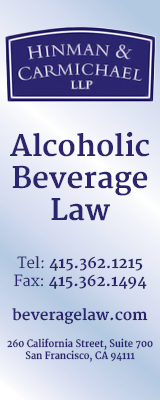FREE! Subscribe to News Fetch, THE daily wine industry briefing - Click Here
![Banner_Xpur_160x600---Wine-Industry-Insight[63]](/wp-content/uploads/Banner_Xpur_160x600-Wine-Industry-Insight63.jpg) |
 ALSO SPONSORED BY: 
Wine Industry Insight |
 |
Wine DTC Hits Record $3.2 Billion in 2019 Amid Slowing Growth
NEWS RELEASE
PR Newswire/January 22, 2020
Annual Sovos ShipCompliant Direct-to-Consumer Wine Shipping Report points to slowing channel growth despite prices reaching new highs.
BOSTON, Jan. 22, 2020 /PRNewswire-PRWeb/ — Wineries shipped more than $3.2 billion worth of wine directly to consumers in 2019, according to the latest Direct-to-Consumer (DtC) Wine Shipping Report from Sovos ShipCompliant and Wines Vines Analytics. With the largest increase in average price per bottle shipped in nearly a decade, wineries grew the value of the channel by 7.4% and volume by 4.7%.
Click here to download the full report (PDF)
This represents a slowdown from past years that saw regular double-digit growth fueled by new states opening their borders to winery direct shipments. Forty-five states and the District of Columbia now allow DtC shipping, leaving only a handful of states as potential new markets as the channel continues to mature.
“The days of annual 13% to 18% increases in the DtC channel are likely over for the wine industry,” said Larry Cormier, vice president and general manager, Sovos ShipCompliant. “Moving forward, we expect expansion in DtC wine shipping to be driven by similar conditions as other luxury goods: the state of the economy, demographic trends, sales and marketing innovation, and continued consumer migration from brick-and-mortar to online purchases.”
The largest DtC region – Napa County – saw only modest growth for the fourth year in a row, lagging behind the rest of the DtC channel with a 2.8% increase in volume compared to 2018. The $1.5 billion in wine Napa County wineries shipped directly to consumers in 2019 represented just under half the total value of the DtC shipping channel at an average price per bottle shipped of $69.39, a 3.4% increase over 2018. Meanwhile, neighboring Sonoma County wineries had a relatively good year with a 5.8% increase in the volume of wine shipments and 6.6% increase in the value of those shipments.
“Despite some signs of maturation, the DtC channel remains the most dynamic and promising sector of the wine business,” said Andrew Adams, editor of the Wine Analytics Report, which is published by Wines Vines Analytics. “Total shipment value increased 12% in December compared to the previous year, and the 12-month total was also much higher than in 2018.”
New for this year, the report breaks out the California Central Coast region from the Rest of California region. Including the counties of Monterey, Santa Cruz, San Benito, San Luis Obispo and Santa Barbara, wineries in the California Central Coast region shipped more than 810,000 cases worth over $326 million in 2019. This makes it the third most active region for DtC shipments behind Napa and Sonoma counties.
And despite some indications that wineries are now operating in a maturing DtC marketplace, Oregon and Washington continue to outperform the rest of the channel. Distinct among regions tracked, Oregon is dependent on a single varietal, Pinot Noir, which accounted for 68% of the total value of the state’s 2019 DtC shipments.
Other notable trends spotlighted in the 2020 Direct-to-Consumer Wine Shipping Report include:
- The lingering impact of wine country fires: Wildfires in wine country destroy more than vineyards, with tourism boards reporting fewer visitors following major fires, carrying negative implications for long-term channel growth.
- Consumers pay more per bottle: In 2019, the highest-priced wines once again saw the greatest growth. The volume of shipments of wines priced at more than $100 per bottle increased by 14% over 2018, far outpacing the overall DtC channel.
- Large wineries see the biggest DtC gains of the decade: Since 2011, large wineries producing more than half a million cases annually have realized a 685% increase in the volume of DtC shipments and a 500% increase in the value of those shipments.
- Oregon again leads other regions in growth: For the 8th year in a row, Oregon outperformed other regions in DtC growth in 2019, with a 9.2% increase by volume and 13.1% increase by value of shipments.
“As more consumers choose to purchase more of their goods online in general, we expect the DtC shipment channel to also increase in size and popularity due to its convenience and broad selection of available wines,” said Danny Brager, senior vice president of Nielsen’s Beverage Alcohol Practice.
The Direct-to-Consumer Wine Shipping Report is an annual collaboration between Sovos ShipCompliant and Wines Vines Analytics.
###




